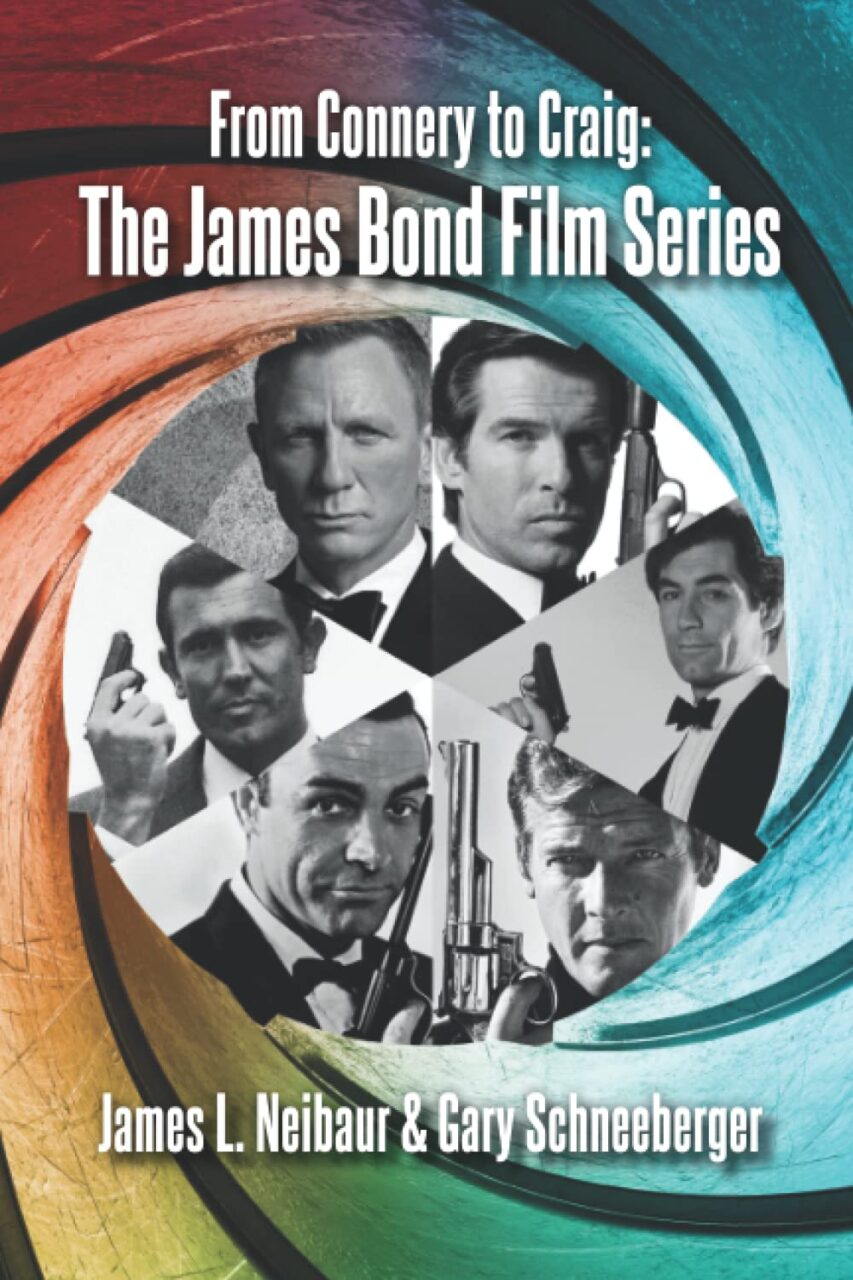Sixty years. Twenty-five films. Six actors. More than $7 billion in box office – before adjusting for inflation. That’s the first iteration of the James Bond cinematic universe by the numbers.
But numbers only tell a sliver of the story. The rest of it is told in definitive and revelatory fashion in From Connery to Craig: The James Bond Film Series, the latest book from James L. Neibaur and Gary Schneeberger, just released by BearManor Media to coincide with the franchise’s 60th anniversary and in advance of Oct. 5’s Global James Bond Day.

The study brings alive the reasons undergirding those numbers, the why that illuminates the what.
“Bond’s six-decade run was fueled by the different shades of the character emphasized and extrapolated upon by the actors wielding 007’s license to kill, each claiming for themselves a calling card from novelist Ian Fleming’s creation,” Schneeberger explains. “They did it by leaning into their strengths as performers and the sensibilities of the culture as those sensibilities shifted – not compromising but adapting.”
While not all the films dominated the box-office, none can be dismissed as bombs. The momentum of the series, built quickly during the Sean Connery era, slowed a time or two in the decades that followed, but never stalled. There was always another mission. Another villain to be stopped. Always – or almost so – a title card at the end of the credits announcing, “James Bond will return.”
Why? The answer, the authors posit, is rooted in another number: 007
“The cinematic James Bond both reflected and helped shape culture,” Neibaur notes. “He was not just played by different leading men, he was set into and against a society that experienced, during his run, the height of the Cold War, the Civil Rights movement, man’s race to the moon, the Baby Boom generation coming of age, the sexual revolution, women’s liberation, Wall Street unease and abuse, the fall of Communism (at least in the Soviet Union), a growing political and ideological divide in the U.S., increasing globalization and breakthroughs in technology that were unimaginable when Fleming and the filmmakers who brought his creation to theaters were trying to imagine them.
“And 007 remained relevant through it all.”
From Connery to Craig features exclusive new interviews with talent in front of and behind the camera in films featuring all the actors who have played the secret agent, from Bond girls to villains and even a Miss Moneypenny. Its foreword was written by John Glen, the most prolific director in the series’ history – who helmed every Bond feature of the 1980s and did notable editing and second-unit work on well-regarded entries in the ’60s and ’70s.
In addition to critical assessments of each film, the authors offer detailed explorations of every production. Central to the book’s revelatory examination of Bond through the years is the authors’ analysis of how each actor who played 007 pushes and pulls on different levers of the character. In broad brush strokes, they have defined each Bond actor’s gravitas in the role in the following terms: Connery, above it all; George Lazenby, equipped for it all; Roger Moore, bemused by it all; Timothy Dalton, resigned to it all; Pierce Brosnan, seen it all; and Daniel Craig, causes it all.
“This is a natural time to offer a study like this – and not just because of the anniversary and all the celebrations going on to commemorate it,” Neibaur says. “It is certain that James Bond will continue – although at the moment the producers say even they don’t know what direction they’ll head. Now’s the time to give the character and the series as the world has known it its due.”


